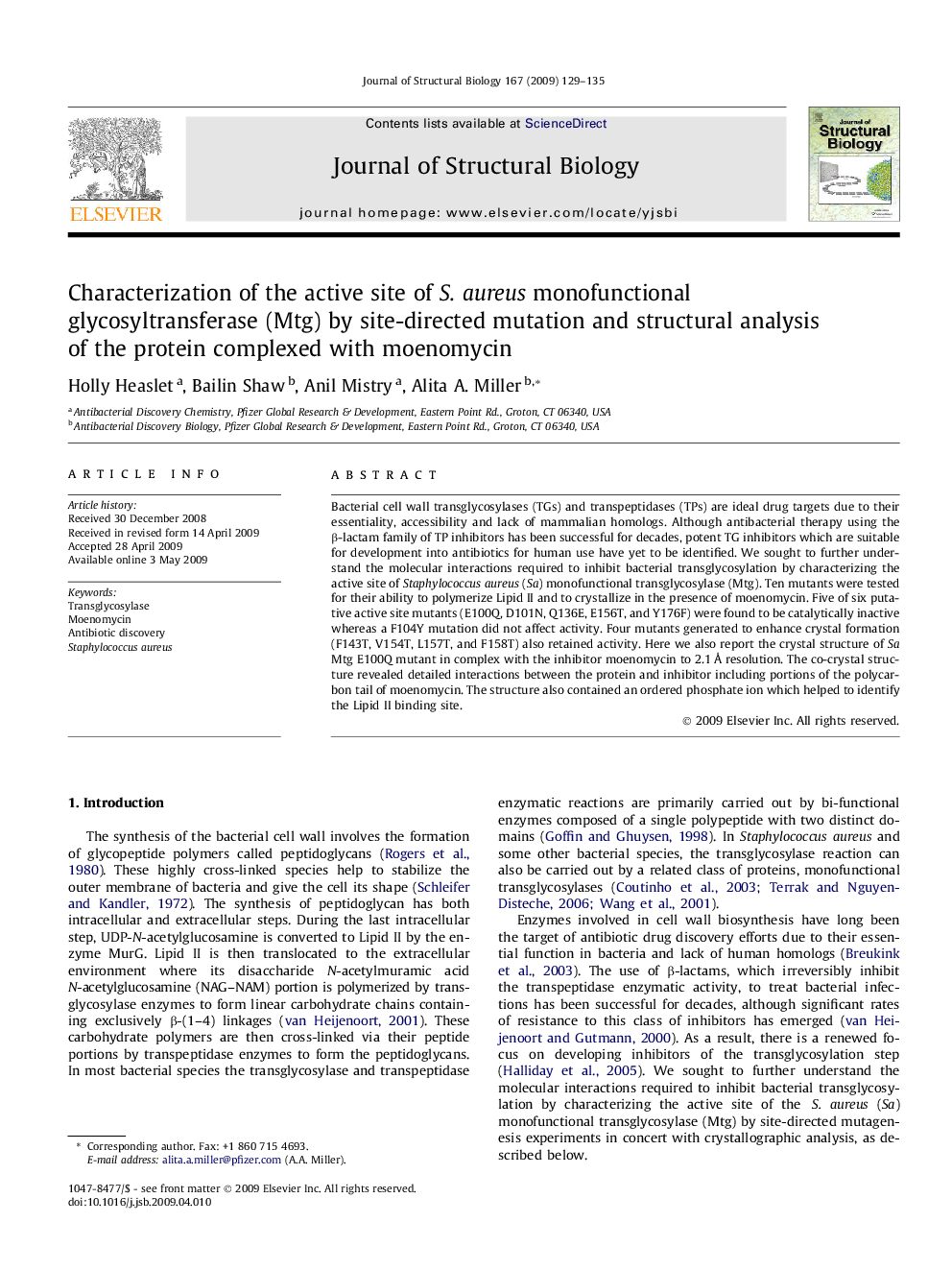| Article ID | Journal | Published Year | Pages | File Type |
|---|---|---|---|---|
| 2829025 | Journal of Structural Biology | 2009 | 7 Pages |
Bacterial cell wall transglycosylases (TGs) and transpeptidases (TPs) are ideal drug targets due to their essentiality, accessibility and lack of mammalian homologs. Although antibacterial therapy using the β-lactam family of TP inhibitors has been successful for decades, potent TG inhibitors which are suitable for development into antibiotics for human use have yet to be identified. We sought to further understand the molecular interactions required to inhibit bacterial transglycosylation by characterizing the active site of Staphylococcus aureus (Sa) monofunctional transglycosylase (Mtg). Ten mutants were tested for their ability to polymerize Lipid II and to crystallize in the presence of moenomycin. Five of six putative active site mutants (E100Q, D101N, Q136E, E156T, and Y176F) were found to be catalytically inactive whereas a F104Y mutation did not affect activity. Four mutants generated to enhance crystal formation (F143T, V154T, L157T, and F158T) also retained activity. Here we also report the crystal structure of Sa Mtg E100Q mutant in complex with the inhibitor moenomycin to 2.1 Å resolution. The co-crystal structure revealed detailed interactions between the protein and inhibitor including portions of the polycarbon tail of moenomycin. The structure also contained an ordered phosphate ion which helped to identify the Lipid II binding site.
